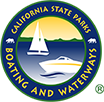What are some system design alternatives?
First, we'll look at some of the advantages and disadvantages of portable toilets and holding tanks in general. Later, we'll examine holding tank systems and their plumbing arrangements in greater detail.
Portable toilets
While a portable toilet is not technically considered a MSD under the law (since it is not "installed"), it may be the simplest, least expensive way to comply with the extent of this law.
Advantages:
Requires minimal space.
Low cost.
Simplicity.
Reliability.
Can be emptied via suction wand at a pumpout facility.
Can be emptied ashore if pumpout facility is not available.
Disadvantages:
Limited capacity
Holding tank systems

Holding tank systems vary in complexity depending on what they are designed to do. There are four basic arrangements.
1. Deck pumpout only.
The holding tank is installed in line between the toilet and the deck pumpout fitting.
Advantages:
Allows use of existing toilet.
Sewage goes directly into the tank.
Simply to install.
Minimal equipment requirements.
Does not require a through hull for discharge.
Disadvantages:
External pump required to evacuate tank.
2. Overboard discharge option after the holding tank.
A diverter "Y" valve is installed in the line between the holding tank and deck pumpout fitting to allow the tanks contents to be pumped overboard where legal (in the ocean beyond the three mile limit). The "Y" valve must be secured to prevent over board discharge in the Chesapeake Bay and it's tributaries.

Advantages:
All sewage is pumped into the holding tank.
Boat will use pumpout facility in port. When beyond the three mile limit, untreated sewage can be pumped directly overboard. If a type I or II sewage treatment system is installed, treated sewage can be pumped directly overboard as well, unless the boat is in "No Discharge" waters.
Disadvantages:
None
Note: A "Y" valve is not required in this option. The deck pumpout fitting and the overboard through-hull valve are normally pressure tight and will function alternatively as selected. Use of a "Y" valve however, will keep unused sections of the hose or pipe from being unnecessarily "wet" (filled with sewage) and provide an additional safeguard against accidental overboard discharge. If a "Y" valve is not installed and secured when operating within the three mile offshore limit, the discharge through-hull valve must be so secured.
3. Overboard discharge options both before and after the holding tank.
"Y" valves are installed in line between the toilet and holding tank and between the holding tank and deck pumpout fitting. 
Advantages:
Flexibility in discharge options. "Y" valves must be secured to prevent overboard discharge of untreated sewage when operating inside the three mile offshore limits.
Disadvantages:
Flexibility is offset by complexity.
4. Overboard discharge option before the holding tank.
When using a type I or II holding system, you should install a holding tank for use when boating in environmentally sensitive areas or when moored or dockside. A "Y" valve, is installed in line between the treatment system and holding tank. 
Advantage:
If a Type I or II treatment system is installed between the toilet and the "Y" valve, treated sewage can be pumped directly overboard, unless the boat is in "No Discharge" waters.
Disadvantages:
"Y" valve must be secured to prevent accidental illegal discharge.
External pump is required to empty holding tank.
These four basic arrangements can be adapted depending on the number and type of toilet(s) installed and whether in-line waste treatment is desired. The section on equipment selection addresses many of the options available.

